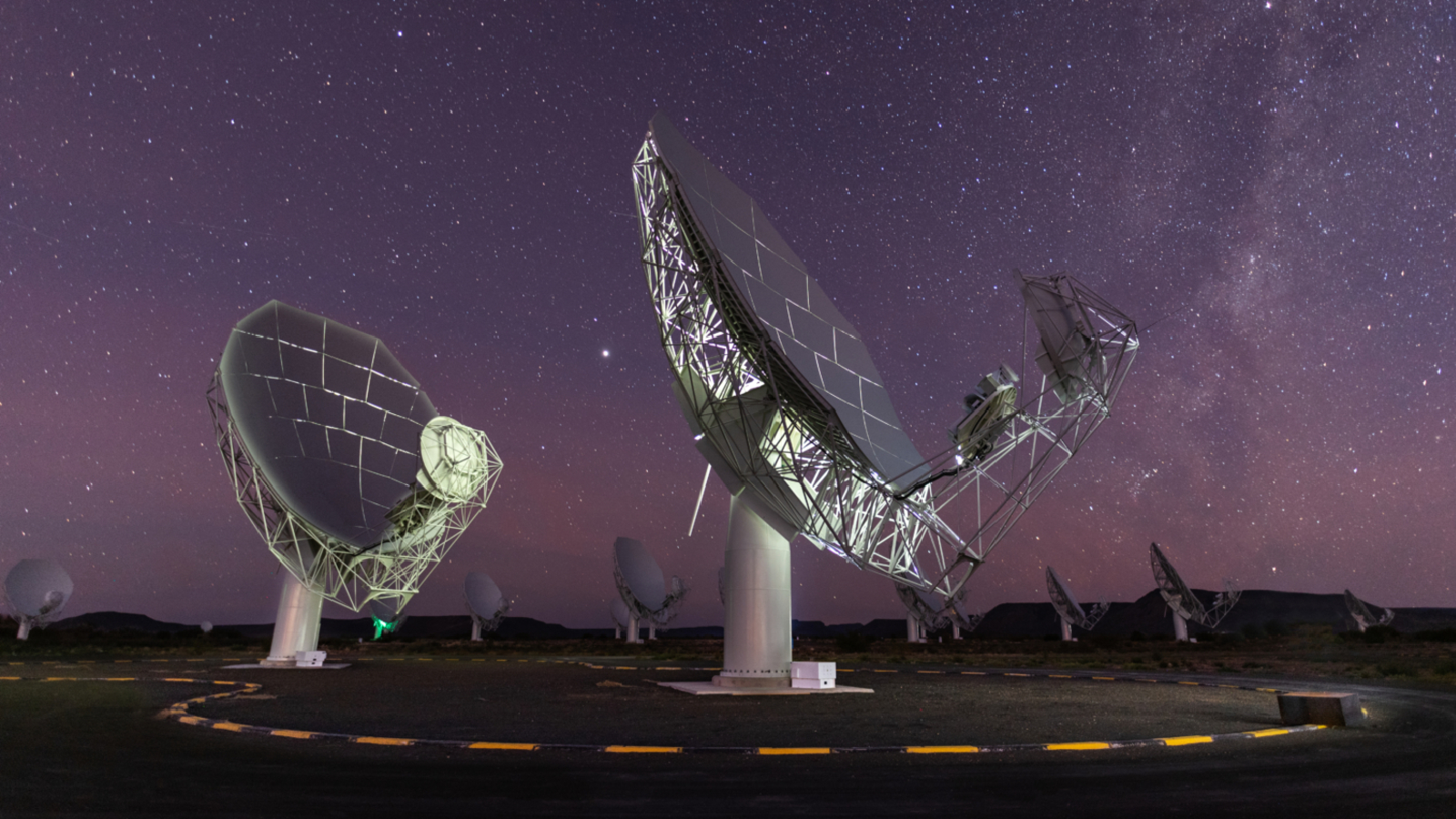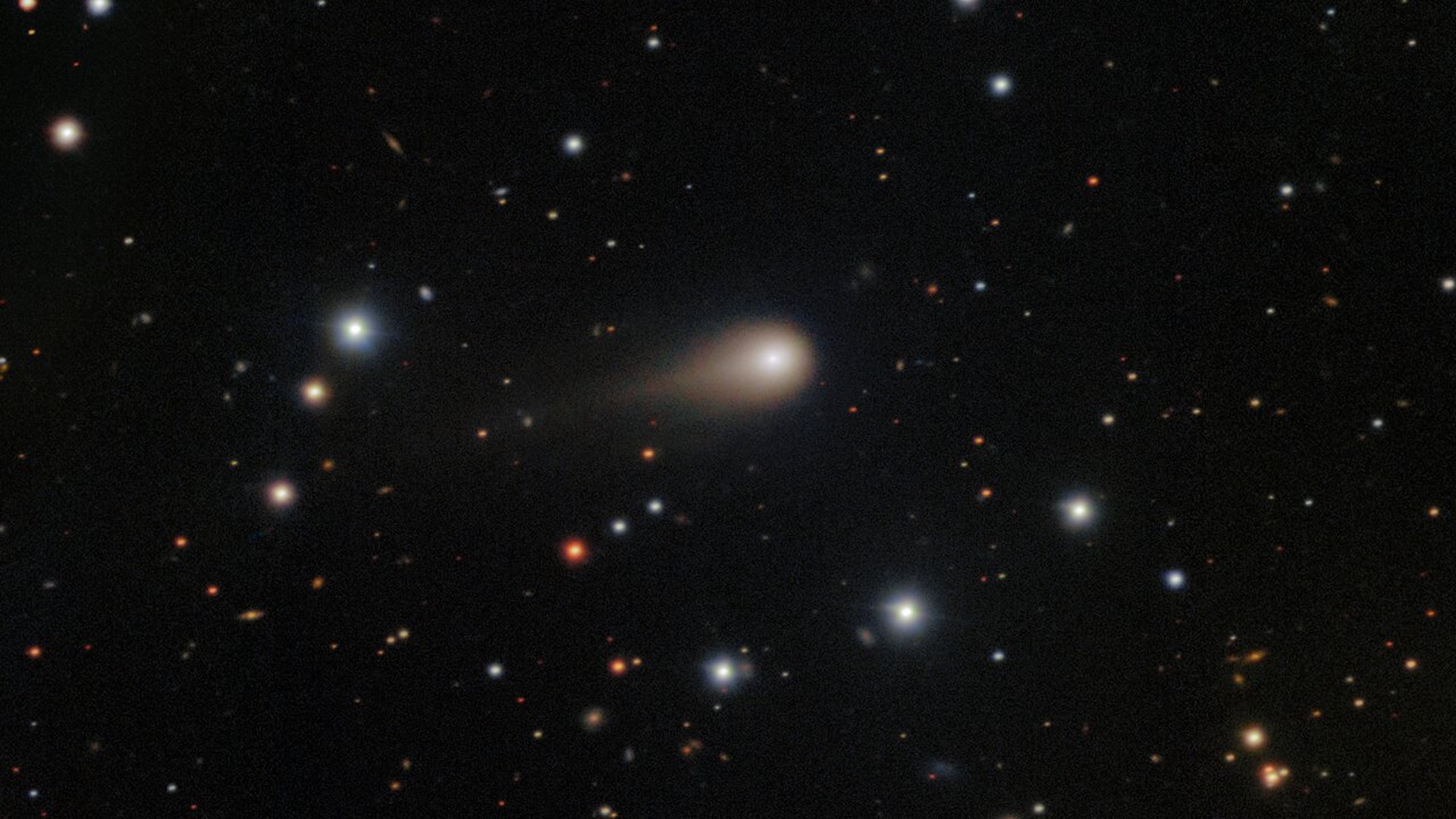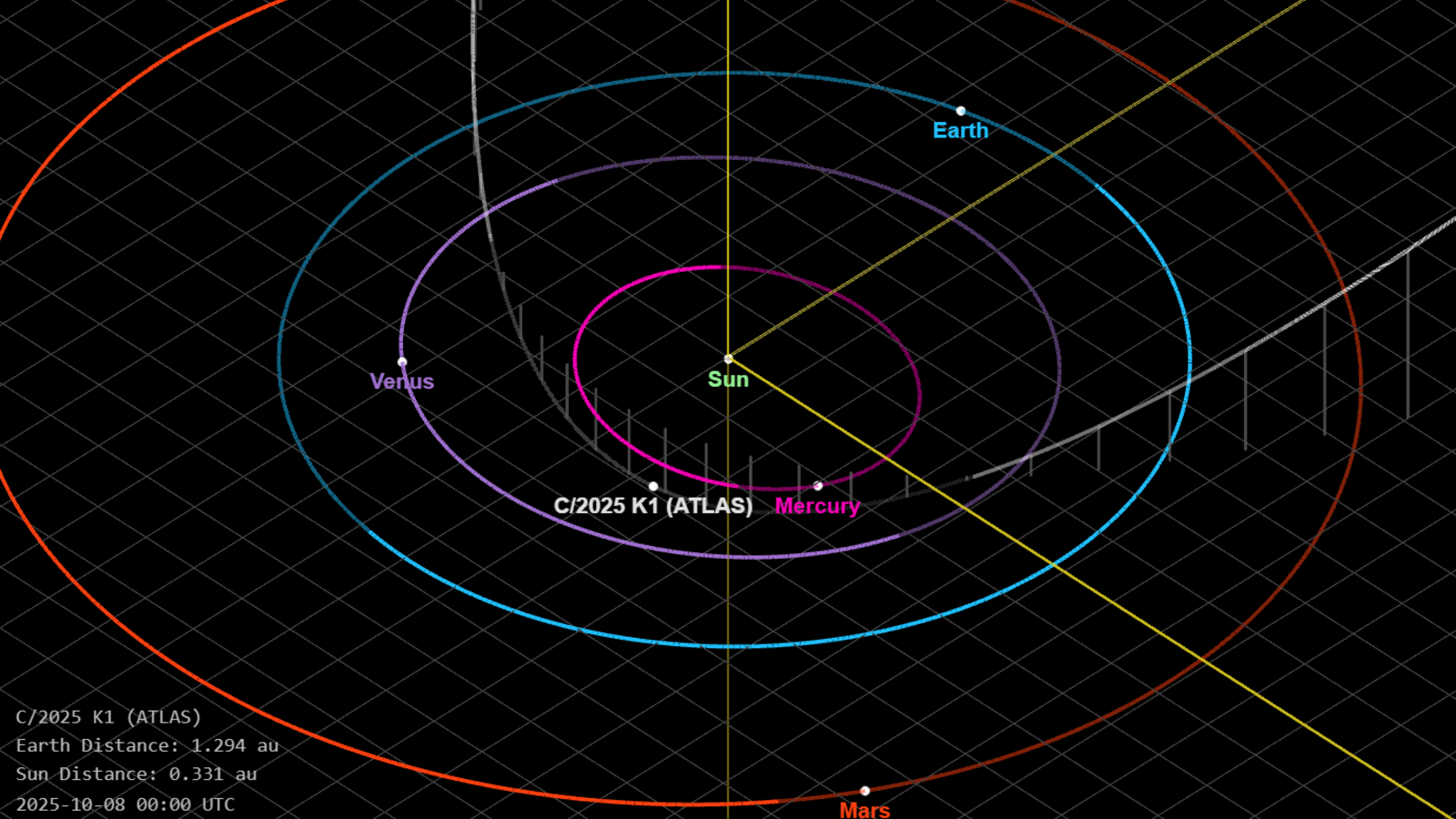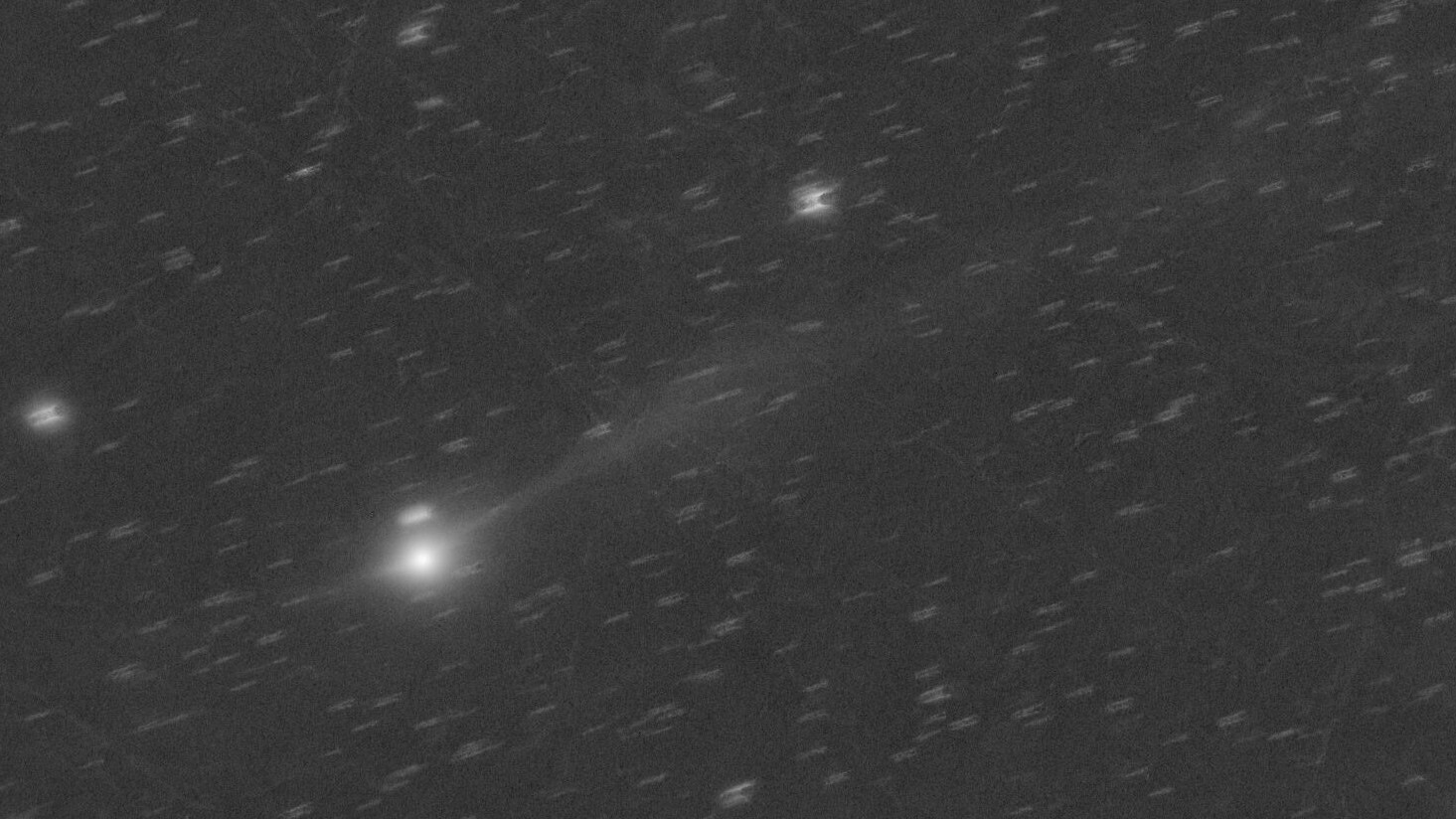Astronomers detect first 'radio signal' from interstellar comet 3I/ATLAS — but it wasn't aliens
Astronomers at South Africa's MeerKAT radio telescope have detected the first radio waves coming from the interstellar comet 3I/ATLAS. But while this sounds suspiciously like alien activity, it is actually further proof of its completely natural origins.

Astronomers have detected the first-ever "radio signal" coming from the interstellar comet 3I/ATLAS, right as it passed the halfway mark on its oneway trip through the solar system. And while this may seem like ostensible proof of the comet’s supposed alien origins — it's actually the complete opposite.
3I/ATLAS is the third-known interstellar object (ISO) to pass through our cosmic neighborhood. It was first spotted in early July, speeding toward the sun at more than 130,000 mph (210,000 km/h), although observations dating back to May have since been uncovered. Most researchers agree that it is a comet, potentially the oldest of its kind ever seen, that was catapulted out of an alien star system in the "frontier" region of the Milky Way up to 7 billion years ago.
However, ever since the interstellar interloper was discovered, a small group of scientists — led by Harvard University astrophysicist and renowned alien-hunter Avi Loeb — have been promoting the unevidenced theory that the comet is actually an alien spacecraft in disguise. This has led to a number of misleading stories about the comet, which experts say distracts from the real science surrounding the ISO. (This is similar to what happened to the first-ever ISO 'Oumumua, which Loeb and others also labelled as a potential alien mothership.)
So, when astronomers at South Africa's MeerKAT radio telescope recently announced that they had detected the first radio emissions from 3I/ATLAS, proponents of Loeb's theory were probably expecting to find evidence of some covert alien transmission, especially as it coincided with the comet's closest approach to the sun, or perihelion, which occurred on Oct. 29.
But the signals did not have a technological origin. Instead, they are the result of specific wavelength absorption related to the presence of hydroxyl radicals, or OH molecules, in the comet's coma.

These radicals are formed by the breakdown of water molecules as they are ejected from the comet via a natural process known as outgassing, which is a clear sign of cometary activity, according to a 2016 study.
This is not the first time that astronomers have seen evidence of water coming from 3I/ATLAS: In early October, NASA researchers spotted water spewing from the comet "like a fire hose" on full blast. But the latest findings show that this water is being broken down by solar radiation —as you would expect during perihelion.
Get the world’s most fascinating discoveries delivered straight to your inbox.
Loeb acknowledged the detection of the hydroxyl radicals in the latest 3I/ATLAS update on his personal blog, which now has over 100,000 subscribers. However, he did not state whether this was a sign of classic cometary activity or not.
The new radio signals were first detected on Oct. 24, shortly after 3I/ATLAS briefly disappeared behind the sun during perihelion. The comet's solar flyby was also notable for an unexpected brightening event and a temporary color change. And after reappearing earlier this month, the comet then appeared to have lost its tail, although this turned out not to be true.

The comet has previously displayed several other anomalous characteristics that have added fuel to the fires of alien conspiracy theorists, including a highly irradiated surface, an overabundance of carbon dioxide and a puzzling anti-tail. However, all of these traits have been properly explained by the astronomical community, which is almost unanimously convinced that 3I/ATLAS is a natural object.
A separate yet connected alien theory was also squashed this week when astronomers detected an "almost interstellar object" that reached its closest point to Earth on Tuesday (Nov. 11). Rumors suggested that it could have been a probe deployed by 3I/ATLAS during perihelion, but this was quickly trashed, with even Loeb admitting the claim was unlikely. Instead, the newly discovered object, dubbed C/2025 V1 (Borisov) is a typical solar system comet.
Other reports, which cited Loeb's calculations on 3I/ATLAS's non-gravitational acceleration, also suggested that the comet may have exploded due to its supposedly excessive loss of mass. However, recent observations have proved that this is not the case either.

Harry is a U.K.-based senior staff writer at Live Science. He studied marine biology at the University of Exeter before training to become a journalist. He covers a wide range of topics including space exploration, planetary science, space weather, climate change, animal behavior and paleontology. His recent work on the solar maximum won "best space submission" at the 2024 Aerospace Media Awards and was shortlisted in the "top scoop" category at the NCTJ Awards for Excellence in 2023. He also writes Live Science's weekly Earth from space series.
You must confirm your public display name before commenting
Please logout and then login again, you will then be prompted to enter your display name.
